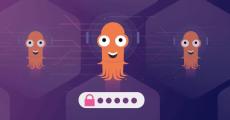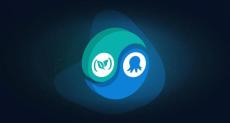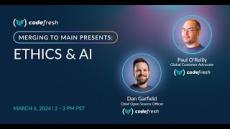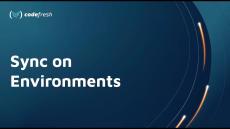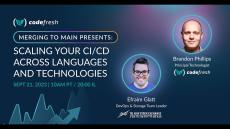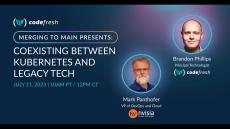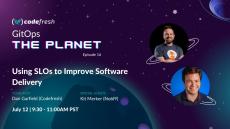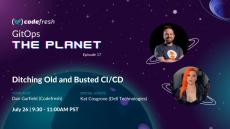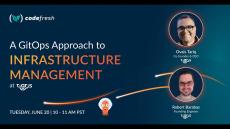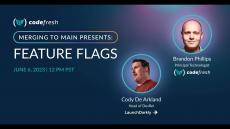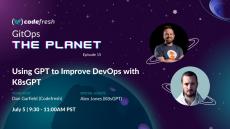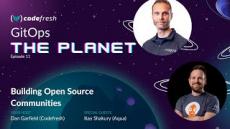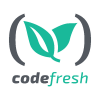|
By Ilia Medvedev
Deploying software to your internal systems or sending releases to external customers is a process that ideally follows strong security requirements in an end-to-end manner. In a perfect world, every software release should come with at least the following guarantees In the world of CI/CD we are mostly interested in binary artifacts and how they were created all the way from the initial release up until they reach production.
|
By Dan Garfield
In September 2023, security researchers from KTrust reported three issues through the official Argo CD security disclosure channels in accordance with Argo CD security policy. In coordination with other Argo maintainers, we have issued security updates for both Argo CD and Codefresh GitOps (enterprise Argo). Below you can read more about these CVEs, their impact, and mitigation.
|
By Luke Goodfellow
The security and storage of secrets is one of the most controversial subjects when it comes to GitOps deployments. Some teams want to go “by the book” and use Git as the storage medium (in an encrypted form of course) while others accept the fact that secrets must be handled in a different way (outside of GitOps). There is no right or wrong answer here and depending on the organization requirements, either solution might be a great fit.
|
By Raziel Tabib
Today marks an important milestone as Codefresh joins forces with Octopus Deploy, a leading player in the Continuous Delivery space. For those less familiar with Octopus, they have been at the forefront of delivering cutting-edge Continuous Delivery for VMs, Windows, and recently stepped into Kubernetes as well.
|
By Francisco Cocozza
The customer in question is one of the world’s leading providers of technology and telecommunication services. In this guide, we will share how one of their teams migrated from a traditional CI solution to a powerful Internal Developer Portal using Codefresh and Port.
|
By Alex Aladov
This article is part of our series “Codefresh in the Wild” which shows how we picked public open-source projects and deployed them to Kubernetes with our own pipelines. We will use several tools such as GitHub, Docker, Codefresh, Argo CD, Kubernetes. This guide chronicles how we integrated all those tools together in order to build an end-to-end Kubernetes deployment workflow.
|
By Luke Goodfellow
This article is part of our series “Codefresh in the Wild” which shows how we picked public open-source projects and deployed them to Kubernetes with our own pipelines. This week’s pick is starbase-80, a Kubernetes “homepage” application. We will use various tools such as GitHub, Docker, AWS, Codefresh, Argo CD, Terraform. This article chronicles how we integrated all those tools together in order to build an end-to-end deployment workflow.
|
By Alexander Mankinenko
This article is part of our series “Codefresh in the Wild” which shows how we picked public open-source projects and deployed them to Kubernetes with our own pipelines. This week’s pick is draw.io an online application for drawing different types of diagrams. We will use several tools such as GitHub, Docker, Helm Codefresh, Argo Rollouts, Argo CD. This guide chronicles how we integrated all those tools together in order to build an end-to-end Kubernetes deployment workflow.
|
By Maryia Brauer
This article is part of our series “Codefresh in the Wild” which shows how we picked public open-source projects and deployed them to Kubernetes with our own pipelines. We will use several tools such as GitHub, Docker, AWS, Codefresh, Argo CD, Kustomize. This guide chronicles how we integrated all those tools together in order to build an end-to-end Kubernetes deployment workflow.
|
By Laurent Rochette
GitOps is a set of best practices that build upon the foundation of Infrastructure As Code (IAC) and expand the approach of using Git as the source of truth for Kubernetes configuration. These best practices are the driving force behind new Kubernetes deployment tools such as Argo CD and Flux as well as the Codefresh enterprise deployment platform. Adopting GitOps in a Kubernetes environment is not a straightforward task when it comes to secret management.
|
By Codefresh
🚨 Merging to Main is back with a new host! 🚨 Let's welcome Paul O'Reilly 🎉 and follow along on his journey of exploring topics around Tech, DevOps, AI, Argo and others, with all sorts of awesome people from all around the globe! 🌎 During this session we have Codefresh's Chief Open Source Officer, Dan Garfield joining Paul live to talk about all things Ethics & AI.
|
By Codefresh
Introducing Products – a new way to manage applications across environments using GitOps and Argo.
|
By Codefresh
Language specific companies used to be the norm because of the complexities of switching programming languages between projects and toolsets. In the last decade the entire market has shifted towards “use the best language for the job” which means achieving efficient Continuous Integration and Continuous Deployment (CI/CD) needs to be more than just language agnostic, it needs to be language empowering.
|
By Codefresh
Are you trying to balance your CI/CD resources and effort between Kubernetes and your legacy tech? Don't know how to encourage adoption of the new processes? On this episode of Merging to Main, we'll cover just that. This episodes guest is Mark Panthofer, VP of DevOps & Cloud at nvisia and, during this session, Brandon and Mark discuss how your CI/CD can coexist between two distinct technology worlds.
|
By Codefresh
Kit Merker is the one of the original product managers for Kubernetes and now Chief Growth Officer at Nobl9 where they're delivering a new open standard called OpenSlo. SLOs, or service-level-objectives, provide a framework for understanding performance targets and making judgements about software changes and how they impact uptime. But it's not just a standard, it's also code. Come find out about it with Kit in this GitOps the Planet!
|
By Codefresh
Kat Cosgrove's (@Dixie3Flatline) unique mix of wit and technical acumen has made her one of the most influential thought leaders in DevOps. She recently gave a number of talks focused on the history and evolution of CI/CD, how it started, and how it's changing. In this GitOps the Planet we'll dive into that history along with how GitOps is changing the automation game once again.
A GitOps Approach to Infrastructure Management with Codefresh (Ovais Tariq & Robert Barabas, Tigris)
|
By Codefresh
GitOps has been at the forefront of agile deployments. However, managing these deployments at a scale, with a constantly growing number of environments can be a daunting task for startups. In this webinar, Ovais Tariq, Co-Founder and CEO, and Robert Barabas, Founding Engineer share how Tigris addressed some of these challenges with the help of Codefresh's Hosted ArgoCD!
|
By Codefresh
Feature Flagging comes with many benefits, like testing new features in a live environment without exposing them to all users, rolling back changes quickly if something goes wrong, and helping isolate the feature development process from deployment so you can better manage your dev cycles. Like everything in the CI/CD world, all features and tools require careful consideration. You want to avoid creating additional tech debt and complicating your codebase, and you certainly want to avoid introducing unnecessary work to a likely already overworked team.
|
By Codefresh
The first real application for AI and LLMs has come to Kubernetes in the form of K8sGPT, a cli that can be used to help operators understand exactly what's going on with their clusters. Our guest, Alex Jones, is the creator of K8sGPT and we'll talk about how the project started, where it's seeing the biggest uses, and where AI will impact DevOps in the future. Don't miss this revolutionary GitOps the Planet!
|
By Codefresh
Itay is the VP Open Source at Aqua Security and CNCF Ambassador. In this GitOps the Planet, we'll discuss open source, dev advocacy, community and how we approach these open source roles. Open source lives at the intersection of community and business, striking the right balance and tone is critical to having a sustainable project with strong community buy-in to serve as the foundation for successful businesses. Come hear all about it!
|
By Codefresh
Technology moves fast. If your current CI/CD is not up to speed, set yourself up for success and ensure your next choice supports these valuable features including: You're in Good Company This FREE Guide will help you discover the most important features any CI/CD tool should have.
|
By Codefresh
This FREE guide highlights the downside to not deploying as often as possible.
|
By Codefresh
Get the FREE ebook to see if your CICD measures up.
- April 2024 (1)
- March 2024 (3)
- February 2024 (9)
- January 2024 (2)
- December 2023 (1)
- November 2023 (1)
- October 2023 (3)
- September 2023 (4)
- August 2023 (3)
- July 2023 (4)
- June 2023 (5)
- May 2023 (3)
- April 2023 (2)
- March 2023 (4)
- February 2023 (3)
- January 2023 (5)
- December 2022 (3)
- November 2022 (2)
- October 2022 (3)
- September 2022 (2)
- August 2022 (5)
- July 2022 (5)
- June 2022 (1)
- May 2022 (2)
- April 2022 (4)
- March 2022 (11)
- February 2022 (6)
- January 2022 (2)
- December 2021 (7)
- November 2021 (1)
- October 2021 (2)
- September 2021 (7)
- August 2021 (2)
- July 2021 (8)
- June 2021 (5)
- May 2021 (5)
- April 2021 (7)
- March 2021 (7)
- February 2021 (14)
- January 2021 (15)
- December 2020 (12)
- November 2020 (19)
- October 2020 (12)
- September 2020 (2)
- August 2020 (7)
- July 2020 (8)
- June 2020 (4)
- May 2020 (6)
- April 2020 (7)
- March 2020 (8)
- February 2020 (1)
- January 2020 (5)
- December 2019 (8)
- November 2019 (5)
- October 2019 (5)
- September 2019 (3)
Codefresh has everything you need to build, integrate, and deploy your product — without the slow build times, complicated setup, and restrictions.
Each step in a Codefresh CI/CD pipeline is its own container, enabling unparalleled speed, modularity, and flexibilty. And with our built-in steps library, you can create a full-fledged pipeline in minutes. From performing a canary release in Kubernetes to building an iOS app, you can create a pipeline that does just about anything in minutes.
Run your builds in a fraction of the time:
- Built for speed and scalability: Codefresh is designed to be the fastest CI/CD platform available. It’s built on Kubernetes for fast speed and unlimited scalability. It’s time to say goodbye to slow, frustrating builds.
- Advanced Distributed Caching: Thanks to our smart docker image layer caching, an embedded registry, and a shared persistent volume, Codefresh caches images, layers, source code, dependencies, and more—and they’re distributed across all nodes used in any pipeline. Your builds are about to be faster than ever.
- Parallel steps and pipelines: Create steps that run in parallel, with powerful features that allow you to explicitly define step order, mix and match sequential and parallel steps, set up prerequisite success criteria for parallel steps, and more.
Codefresh helps you build powerful, fast, and simple CI/CD pipelines.



